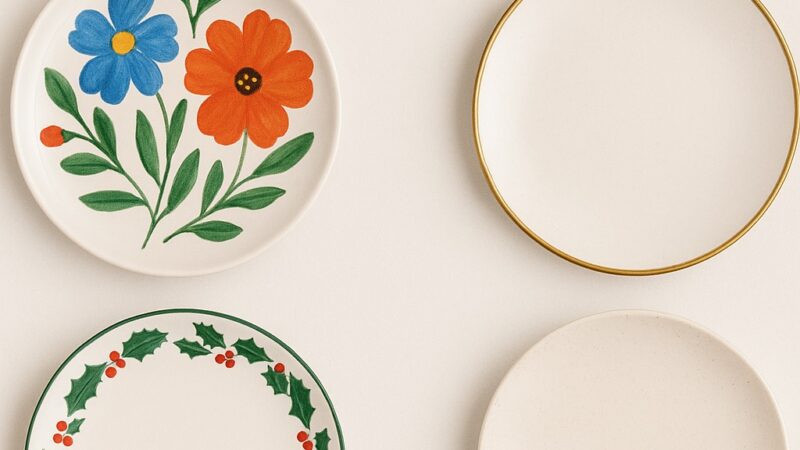How To Paint Bathroom Cabinets: A Step By Step Guide

Is your bathroom looking a bit dull? Painting your cabinets is one of the easiest ways to give them a fresh look. This DIY project can transform your space without a big expense. In this article, we’ll guide you through the steps to paint your bathroom cabinets, making them look brand new with just a few simple supplies and some elbow grease. Let’s get started on giving your bathroom a fresh, new look.
Essentials for the Project
| Tools | Materials |
|---|---|
| Cordless drill or screwdriver | Trisodium phosphate (TSP) |
| Bucket | Spackling compound or wood filler |
| Rubber gloves | Sandpaper (120- to 220-grit) |
| Safety goggles | Tack cloth or a clean rag |
| Sponge | Deglosser |
| Putty knife | Painters tape |
| Drop cloth | Primer |
| Synthetic paintbrushes (1.5″ tapered & 2″) | Paint |
| Microfiber paint rollers (2″-3″ wide) | Paint tray and stir sticks |
Choosing the Right Paint and Primer for Bathroom Cabinets
Picking the Paint
When it comes to painting bathroom cabinets, the best choices are acrylic enamel paint and alkyd paint. Acrylic (water-based) paints have low fumes and are easy to clean with water. Alkyd (oil-based) paints need good ventilation due to solvents that irritate your lungs and require mineral spirits for cleanup. However, they provide a durable finish that is ideal for a bathroom’s humid environment. Higher-gloss paints are more resistant to moisture and daily wear compared to flat finishes.
Top Paint Picks
- Benjamin Moore Advance Waterborne Alkyd
- Behr Urethane Alkyd Enamel
- Sherwin Williams Emerald Urethane Enamel
Choosing the Primer
Shellac or oil-based primers are usually recommended for bathroom cabinets. Shellac primers effectively reduce brush marks and offer flexibility, allowing you to use either oil-based or water-based paints over them.
Top Primer Picks
- Zinsser BIN Shellac Primer
- KILZ Adhesion Primer
- INSL-X Acrylic Waterborne Bonding Primer
Clear Out the Cabinets
Remove everything from the cabinets so you don’t get paint on your items. This is also a good chance to throw away old or unused things.
How to Paint Bathroom Cabinets
Step 1: Remove the Hardware
First, take off the cabinet doors and drawers from your vanity. Be sure to remove all the hardware, like hinges and handles. Painting over them can cause problems. If the hardware has old paint, you might want to get it cleaned by a professional.
To keep things organized
- Draw a simple map showing where each door and drawer goes.
- Label each piece so it’s easy to put them back together later.
- Use a cordless drill or a screwdriver to remove the hinges and handles. If your cabinets have moving shelves, remove those, too, along with any parts holding them in place.
Step 2: Clean and Sand Your Cabinets
- Clean the Cabinets: Start by cleaning all the surfaces you want to paint. Use a cleaner that gets rid of dirt and grease, like trisodium phosphate (TSP). Mix it with water as instructed on the package.
- Stay Safe: Wear protective goggles and rubber gloves to protect yourself while cleaning.
- Apply the Cleaner: Use a sponge to scrub the cabinet boxes, drawers, and both sides of the doors and shelves with the TSP solution. Make sure to clean everything well.
- Fill Holes and Dents: Once the cabinets are clean and dry, use a putty knife to fill any small holes or dents with a spackling compound or wood filler. Let it dry completely. If you’re changing the hardware, fill in those holes, too.
Sand the Cabinets: Sand all the surfaces to prepare them for painting. Pay extra attention to any decorative details to ensure the new paint will stick well.
Step 3: Test and Prime
1. Test the Paint: Test the new colour before painting all your cabinets. Apply primer and paint to the back of one cabinet door. This lets you see if you like the colour and if the paint sticks well. Ask your local paint store for advice if you don’t like it.
2. Prepare the Area: Use painter’s tape to protect walls and mirrors. Lay a drop cloth on the floor to catch any spills or drips.
3. Apply the Primer: Using a roller or paintbrush, Prime the cabinet boxes, drawers, and both sides of the doors. For detailed areas, use a tapered brush. Rollers work well on larger, flat surfaces. When using a brush, apply the primer with smooth, even strokes to avoid brush marks. Apply one light coat of primer and let it dry completely.
Step 4: Painting Your Cabinets
- Use Fresh Paint: Make sure to use the paint within a day after mixing it. Stir it well before pouring it into the paint tray to ensure it’s mixed properly.
- Prepare Your Tools: Dip your roller or brush into the paint. Start with the cabinet doors; they need to dry before you can paint the other side. If you have shelves to paint, now is a good time to start on those.
- Apply Thin Layers: Apply light, thin layers of paint to avoid drips and get a smooth finish. You will need at least two coats on each side for good coverage.
- Paint the Drawer Fronts: Paint only the fronts of the drawers, not the sides or the hardware. Use painter’s tape to cover parts you don’t want to paint. Stand the drawers on their ends to keep them stable. Apply thin layers of paint, letting each coat dry completely before adding another.
Step 5: Painting and Reassembling the Cabinet
1. Paint the Frame: Use a roller or paintbrush to paint the frame and sides of the cabinet. There’s no need to paint inside unless the shelves are fixed. Apply thin layers of paint, and let each coat dry completely before adding another. This may take a day or more for each coat to dry.
2. Put It Back Together: Reattach the drawer pulls and hinges once the paint is dry. Using your map, hang the doors back on the cabinet frame. You can spray-paint the hardware and let it dry before putting it back on. Finally, slide the drawers back into place.
How To Paint Cabinets Like A Pro
Rent a Sprayer
If you have a big project, renting a power sprayer from a hardware store can help. Ask a paint expert which sprayer you need. You may need an air compressor, a sprayer gun, and some tubing. These tools are easy to use and will give you a smooth, even finish.
Hire a Professional
You can send your cabinet doors and drawers to a professional paint shop for a perfect finish. They can spray-paint them to look brand new. Ask your paint store for recommendations or search online to find a professional.
Do the Cabinet Boxes Yourself
You can paint the cabinet boxes yourself. This part is usually easy enough for a DIY project and can save you some money.
How To Paint Bathroom Cabinets That Are Not Wood
Painting non-wood bathroom cabinets, such as metal or laminate, requires a slightly different approach to ensure the paint adheres well and gives a durable finish. Here’s a simple guide to help you through the process:
Clean the Cabinets
- Use a cleaner like TSP to remove all the dirt and grease from the cabinets.
- Mix the cleaner with water as instructed and wear gloves and goggles for safety. Clean all the cabinet surfaces well.
Sand the Surfaces
- Lightly sand the cabinets with fine sandpaper (220-grit) to make the surface rougher. This helps the paint stick better.
- Wipe off the dust with a damp cloth and let the cabinets dry.
Apply Primer
- Choose a primer that works for your cabinet material. For laminate, use a shellac or bonding primer. For metal, use a metal primer.
- Apply a thin coat of primer with a roller or brush. Let it dry completely.
Paint the Cabinets
- Pick a good paint for your cabinet material. Use paint for metal if your cabinets are metal; use paint for laminate if they are laminate.
- Apply the paint in thin layers using a roller or brush. Let each coat dry before adding another. You may need 2-3 coats for full coverage.
Put Everything Back Together
- Once the paint is dry, put the hardware back on and reassemble the cabinets.
How To Paint Bathroom Cabinets Without Sanding
If you want to paint your bathroom cabinets without sanding, there are alternative methods to ensure the paint adheres well. Here’s a simple guide to help you:
Clean the Cabinets
- Start by cleaning the cabinets with a strong cleaner like TSP to remove grease and dirt.
- Follow the instructions to mix TSP with water. Wear gloves and goggles for safety, and clean all the surfaces well.
Use a Liquid Deglosser
- Apply a liquid deglosser to dull the shiny finish of the cabinets without sanding.
- Follow the instructions on the deglosser and use a cloth to apply it.
Apply a Bonding Primer
- Choose a bonding primer that sticks well to glossy surfaces.
- Apply a thin, even coat of the primer with a roller or brush. Let it dry completely.
Paint the Cabinets
- Pick a paint that works for your cabinet material (wood, laminate, or metal).
- Apply thin coats of paint with a roller or brush, letting each coat dry before adding another. You might need 2-3 coats for full coverage.
Recommendation
How to Get Rid of Ants in Bathroom?
How To Remove Bathroom Sink Stoppers?
Why Does My Bathroom Smell Like Sewage?
Best Bathroom Cleaner For 2025
Best Bathroom Flooring Ideas for 2025
What is the Best Flooring for a Small Bathroom?
How to Decorate a Bathroom Shelve?
Conclusion
In conclusion, Painting your bathroom cabinets is a simple and budget-friendly way to transform your space. With the right tools, materials, and a little patience, you can give your cabinets a brand-new look without hiring professionals. Whether you’re tackling wood, laminate, or metal cabinets, following the steps in this guide will ensure a smooth and durable finish. So, grab your supplies, roll up your sleeves, and enjoy the satisfaction of creating a fresh, updated bathroom on your own.
FAQs
Q: What kind of paint do you use on bathroom cabinets?
A: Water-based paint (also called latex paint) is a great choice because it dries quickly and is easy to clean with water. Choose paint with a semi-gloss, satin, or glossy finish for the best results. These finishes are strong, long-lasting, and simple to wipe clean. To ensure high quality and durability, go for a paint labelled as 100% acrylic enamel.
Q: Do I need to prime bathroom cabinets before painting?
A: For shiny surfaces, using a shellac-based primer is important to help the paint stick properly, even if you’ve already sanded it. Without it, the paint and primer might scratch off easily. Apply one coat of the primer using a brush or roller, and make sure it dries completely before moving on to painting.
Q: Can I paint bathroom cabinets without sanding?
A: If the cabinets’ surface is in good shape and stable, you don’t need to sand them. Instead, clean them well, use a deglosser to remove shine, and choose high-quality cabinet paint. These steps will ensure the paint sticks properly without sanding.
Q: How many coats of paint on bathroom cabinets?
A: After the first coat of paint dries, gently sand the surface with 220-grit sandpaper and wipe it clean with a damp microfiber cloth. Then, apply a second coat of paint. You might not need a third coat, but applying at least two coats will give you smooth and even coverage.






